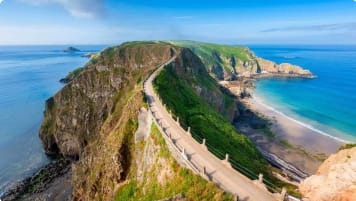The British Country House: A Definitive Guide
Articles explores the evolution of the British country house. Landscape, the work of the likes of Capability Brown have influenced the house through time. An Antipodean travel company serving World Travellers since 1983 with small group educational tours for senior couples and mature solo travellers.
18 Jul 23 · 13 mins read

The British Country House
Cliveden House, Burghley House, Blenheim Palace: country houses have long stood as icons in the British landscape. From the Middle Ages until today, the historic houses have gone through various changes, evolving in styles from Jacobean, to Palladian, Baroque, Neoclassical, Neogothic, and more. All the while they have stood in various forms, including the fortified manor house, grand mansion and sprawling estate, as well as smaller manageable homes, villas, hunting lodges, and hideaways. Situated in rural locations, surrounded by their own land, they have stood for centuries as a place of refuge, recreation, entertainment, and employment.
This article explores the history and significance of country houses in Britain. It is intended as background reading for Odyssey Travellers tours to Britain’s countryside. Our 19-day Villages of England Tour, in particular, gives an insight into the English country house amidst authentic country life. Hidden gems and amazing landscapes, meanwhile, can also be discovered during our 22-day Rural Britain Walking Tour and our 21-day Prehistoric Britain Tour.
Much of the information used in this article is sourced from Clive Aslet’s The Story of the Country House.
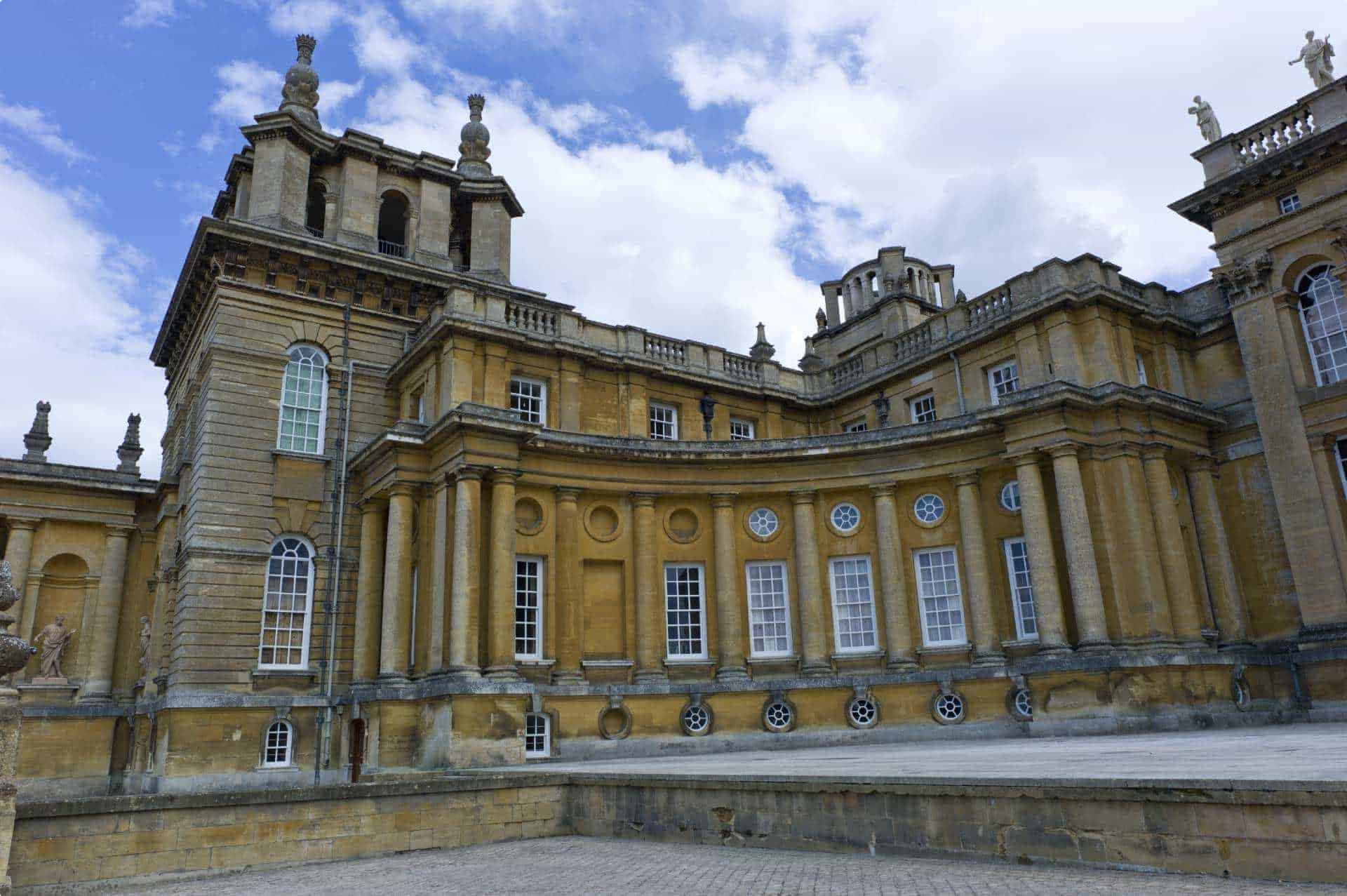
What is a Country House?
Historians used to define a country house as a gentleman’s residence in the centre of a landed estate. These were houses on vast tracts of land. Rents from the tenanted farms that made up the estate paid for the house. The idea was that it was sealed and largely self-sufficient system. These were the seats of gentlemen or noblemen – those who could afford to have a country house. This implies settled occupation and the probability of a family vault in the parish church.
This definition, however, does not completely hold up. It was usually only the gentry who couldn’t afford a townhouse who lived in a country home full-time. Others went back and forth between the country and the city. In the Middle Ages, particularly, although noblemen and women did possess seats – the place where they family had come from and members were buried – they were always on the move between castles, manor houses and hunting lodges. They would also follow the court, which similarly roamed.
Later, the great Tudor and Jacobean courtiers spent prodigiously on lavish building projects, sometimes even ruining themselves in the process. They built the country homes that many think of today – large houses and mansions – usually built to impress the monarch, with costs unrelated to the income of the estate.

Others built in places that were convenient for the court or the money-making opportunities of the City of London. They were places of recreation, but closely linked to the town. The suburbs of London have since swallowed them up.
In the early 20th century, most people did not want much land at all. Country houses were seen as an escape to a different, more simple way of life from the stuffy, conservative city-circles associated with Edward VII and George V. Many new country houses did have land after the Second World War, but this was because they were built by landowners who were downsizing from monster houses to more manageable ones built on the same site.
Another type of country house includes the villa. Villas were originally caprices – small, highly architectural buildings on the outskirts of towns, which could be visited for the day. In the 18th century they became more permanent dwellings. These days, many new country houses are of villa size and dependent on easy access to the city. Hunting lodges and the medieval hideaways known as pleasances can also be considered country houses.
Clive Aslet, the historian of architecture, therefore, provides a definition of the country house as “A work of domestic architecture in a rural location, surrounded by its own land (although not necessarily a landed estate) and intended to seem a self-contained unit: its own ‘little kingdom’, as nineteenth-century writers liked to call it.”
He stresses that although farm work may have been done from it, the country house by definition is not a working entity like a farmhouse. Rather, it is a mini-Arcadia, a place where owner and loved ones can find refuge from a harsh or volatile world.
Country Houses Across the British Isles
Country Houses can be found all over Britain. Of course, due to its economically dominant position from the Middle Ages onwards, England has more than Scotland, Wales, or Ireland.
Here, peasants could produce a surplus, however modest, because of the kinder climate, while those of the other countries struggled to subsist. This meant that English landowners could collect more rent. They could also keep more sheep at a time when wool was one of the few internationally traded commodities. English kings also owned parts of France. Although they often had to fight expensive wars to keep or regain them, victory could bring vast amounts of wealth as towns were sacked and booty distributed among the leaders of the winning side.
As such, England had more money to spend on domestic architecture. A special incentive was to build around London, where the houses could be seen by people of influence.

Moreover, because each different country of the British Isles has its own individual history, it’s not necessarily possible to treat them as a single geographical unit. Ireland was a colony, Scotland a separate kingdom. Wales was conquered by Edward I at the end of the thirteenth century but its princes and warlords did not take occupation lying down; integration with England only came under the Tudors.
As such, each country had its own architectural traditions that lasted into the 18th century – and has, in the case of Scotland, also been revived since. The regional strands were spun together after the Scottish Act of Union of 1707, when Scotland was joined to England and Wales, and the Irish Act of Union of 1801, when the United Kingdom was formed.
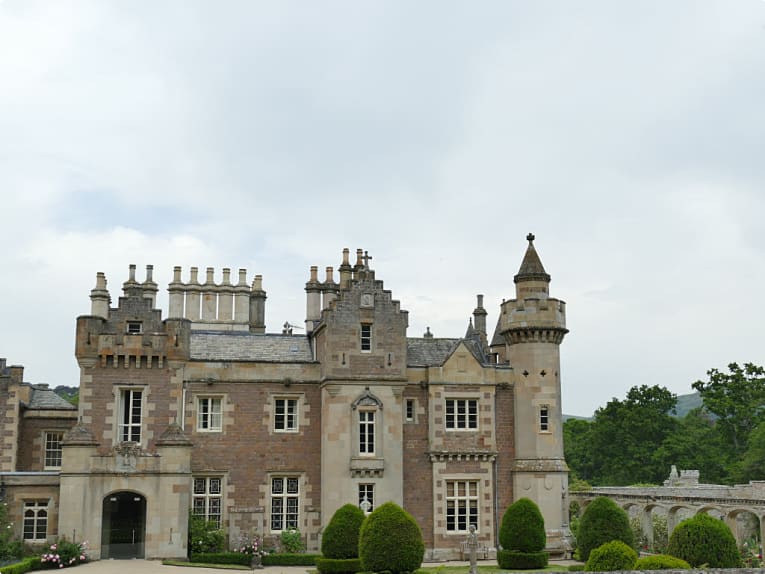
Inevitably, then, there are differences, but also shared features. Regional traditions merged with the architectural mainstream during the Georgian period, with local variations only somewhat distinct. Then, by the late 18th century, the same architects were being used throughout Britain, leading to a complete confluence of styles.
Growth of the Country House
Country houses became popular as early as the sixteenth century, during the Tudor period. The first were large houses owned by feudal lords – the first of their type built without fortifications. A vast number more were then created with the Dissolution of the Monasteries between 1536 and 1541, after Henry VIII declared himself head of the Church of England. The king would give the monasteries to many members of nobility, often those who were his favourite courtiers. The nobility then converted these monasteries into country houses on vast rural estates.
The country estates gave owners security, status, and a stake in country affairs. They therefore lavished great amounts of money on their country houses from which the great estates were run. Many people, such as Tudor lawyers and merchants, also aspired to marry into the gentry and/or buy country estates themselves in order to reap the benefits.
The expansion of country houses continued during the reigns of Elizabeth I and James I in the form of the prodigy house. Commissioned architects designed these mansions as a way to display the wealth of the family, expressing great opulence and luxury. These architects left their mark on the houses with impressive design features. The intention was to build houses of such beauty and grandeur as to attract the monarch and royal entourage to visit the family and occupy the house as they travelled around the country.
Longleat House, seat of the Marquesses of Bath. still stands as a grand example of the Elizabethan prodigy home. Its 900 acres of parkland has since been transformed into an impressive safari park.

The Country House Peak Period
The number and size of country houses expanded greatly in the 1700s and 1800s. This era saw the aristocracy both build grand and extravagant new houses and expand on the existing ones. This was backed with money earnt from expanding trade and commerce and rent and taxes. Wealthy families would leave the hustle and bustle of their homes in the cities to escape to these country houses – places for relaxation, hunting, fishing, shooting, entertainment, and dinner parties.
A number of new architectural styles were embraced during this time. One of the most common was the Palladian style, introduced by the famous architect Indigo Jones, who was inspired by his travels in Renaissance Italy. This style is known for its perfect symmetry, use of classical elements, and grand aesthetic. It often includes large decorative columns supporting open structures or porticos.

The baroque style also became popular. This was a more flamboyant style, which intentionally altered classical elements to make buildings more ostentatious and evocative. Characteristics include vaulted cupolas (domelike ceilings), elaborate motifs or decorations, gilded sculpture, double-sloped mansard roofs, and interiors with luxuriant fabrics and furniture. Chatsworth House in the Derbyshire Dales, England, is a famous example of this style in a country house.
By the nineteenth century neoclassical architecture had become the dominant style in Britain. Neoclassicism used the same ideas and motifs of classical art, with a focus on harmony, simplicity, proportion, and symmetry. In stark contrast to the Baroque period, buildings and decorations abandoned decorative scrolls and frills in favour of clean and straight lines, simple geometric motifs, and plain block colours.

By the middle of the century, a new landed gentry, the industrialists, had begun to rise up and challenge the old aristocracy. Suddenly this new class of factory-owners, mill-owners, manufacturers, bankers, shipping magnates, and trade moguls had money to spend. They too started remodelling and building grand houses out in the country away from the smoggy and sooty big cities. Their preferred style was neo-gothic, drawing on features of medieval architecture, such as decorative patterns, finials, lancet windows, and hood mould.
The Role of Women
The story of the country house is not only male. Even in the Middle Ages, some women – widows, abbesses – could be rich and independent. They might also have been educated to a high standard in convents.
Men may have generally taken the big decisions on architecture, landscape, collecting and furniture– but some couples, like the 1st Marquess and Marchioness of Lansdowne at Bowood, did everything together. Wives like the Jacobean Lady Lisle at Penshurst, meanwhile, supervised architectural works and estates while their husbands were away at court, in the army or making their fortunes overseas. During the English Civil War, this could even extend to defending the country house against siege.
Country houses have always been family places. Today, they are often acquired by couples when they start to have children. Owners in the past were family-minded in a different way – they saw country houses as dynastic seats, and wives underwent a constant round of pregnancies to produce heirs. Babies were even put out to be breast-fed by countrywomen to allow the mother to conceive again as quickly as possible.
There were no women architects to speak of before the twentieth century – but feminine influence inside the country house cannot be overlooked. The wife ran the household, bottling fruit, dispensing home-made medicines, decorating the house, and ensuring that epic deliveries of raw ingredients for the kitchen were properly stored, that carpets were beaten, and copper pans scoured. Their work not only occupied house of labour but was vital for the functioning and appearance of the home.
People and Privacy
In order to run the large country houses, it required a multitude of workers. As such, the houses served as centres of employment for many rural communities, with large numbers of both indoor and outdoor staff taking care of the needs and whimsies of their employer. Rural commoners could also pay to stay and work on the farmland, and were a significant source of income for landowners.
The country houses also regularly contained large numbers of visiting family and friends. They were at the centre of what the Middle Ages called an affinity and the Georgian period a connection. We might call it a social group or community. People came to conversate, conduct business deals, or to attend parties. For example, until the Second World War, noblesse oblige required traditional landowners to throw huge parties for their eldest son’s coming of age and other dynastic events.
Privacy was hard to come by. For most of history country house owners lived in close, sweaty proximity to other people on whom they relied for the necessities of existence. Indeed, before the eighteenth century, servants routinely slept outside bedroom doors.
Nobles still longed to escape the crowds through. Medieval kings built fancifully named hideaways to which they could retreat with loved ones or a few chosen friends (and the servants who would look after them). Several country-house owners, particularly in Ireland, also built tunnels so they could avoid contact with their servants.
Eighteenth-century gentlemen, meanwhile, found seclusion in the follies of their landscape parks. On the edge of Ullswater in the Lake District, for example, the 11th Duke of Norfolk built Lyulph’s Tower, as an escape from Greystoke Castle – which was itself considerably smaller and more remote than his main seat of Arundel Castle, on which he spent heavily.

These days people buy or build country houses to be private. The twentieth century advent of washing machines, vacuum cleaners, and dishwashers have made this possible, with owners living more independently of staff. As such, few new houses are equipped for many, if any, staff to live in. Instead, privacy is closely guarded: there are no passers-by and probably few guests, to judge from the small number of bedrooms in most new country house.
Decline and Renewal of the Country House
Changing times from the late nineteenth century would bring about the end of the country house. With the Industrial Revolution, many peasants, tenant farmers and villagers left the countryside and their jobs in farming or rearing livestock for better wages and a more reliable income in the factories and warehouses of the cities. This meant fewer people working the land and thus fewer people the local landlord could tax. At the same time, these homeowners were hit with rising taxes on themselves, including a new National Insurance levy paid on each member of the household. For the first time in centuries, aristocratic wealth was under threat.
This was made worse by the Agricultural Depression that began in the 1870s, caused by the arrival of cheap grain, flour, wheat, barley, and other foodstuffs from North America. With this, farming across Britain crumbled. Land greatly depreciated in value, ceasing to be the reliable and productive investment it had been for so long. Indeed, many owners experienced financial difficulties, unable raise the income needed to manage their estates.
Many instead looked to other sources of income to save their country houses and lifestyles. Some went into the trade and banking sector, while others sought to marry wealthy American heiresses. The impoverished ninth Duke of Marlborough, Charles Spencer-Churchill, for example, famously married Consuelo Vanderbilt, a member of a prominent Dutch American family, in a celebrity wedding of sort in 1895. The marriage was arranged by Consuelo’s socially striving mother, Alva, seeking an English title and aristocratic match for her daughter.
The ultimate demise of the country house began with the impacts of World War One. Much of the huge staff required to maintain large houses left to either fight, contribute to the war effort working in munitions factories, or fill the spots left in other workplaces left by the fighting men. Many did not return, either sadly dying in the war or remaining in their new urban places of work. Many of those who did return from the war also chose to the pursue better-paid jobs with fixed hours in the towns and cities. Without the staff, many country houses simply fell into disrepair, and many landowners sold up.
The final blow for many of the surviving country houses came with World War Two. With conscription, both men and women were compelled to report for military service or war work, and so the number of employed staff in country houses sunk even lower. Plenty of these houses all over Britain were also requisitioned by the government for military purposes. Following the war, they were returned debilitated and even completely destroyed due to overuse and carelessness.
To make mattes worse, land by this point was providing abysmal income and staff was now rare to come by due to other better employment opportunities. As such, many owners chose to either sell their country homes entirely or hold contents auctions and then demolish the house to sell its stone, fireplaces, and panelling. Many of Britain’s finest houses met this fate, with around 1200 country homes believed to have been demolished in England alone.
But this is not a story just of death – in past decades the country house has in fact been revived. Often owners have built on sites of demolished mansions, to take advantage of the opportunities for planning permission as well as the mature landscape. Many older surviving houses, meanwhile, have been converted into hotels, schools, hospitals for locals and more. Plus, country houses with significant historical value have been preserved as museums open to the public.
Tour of Britain
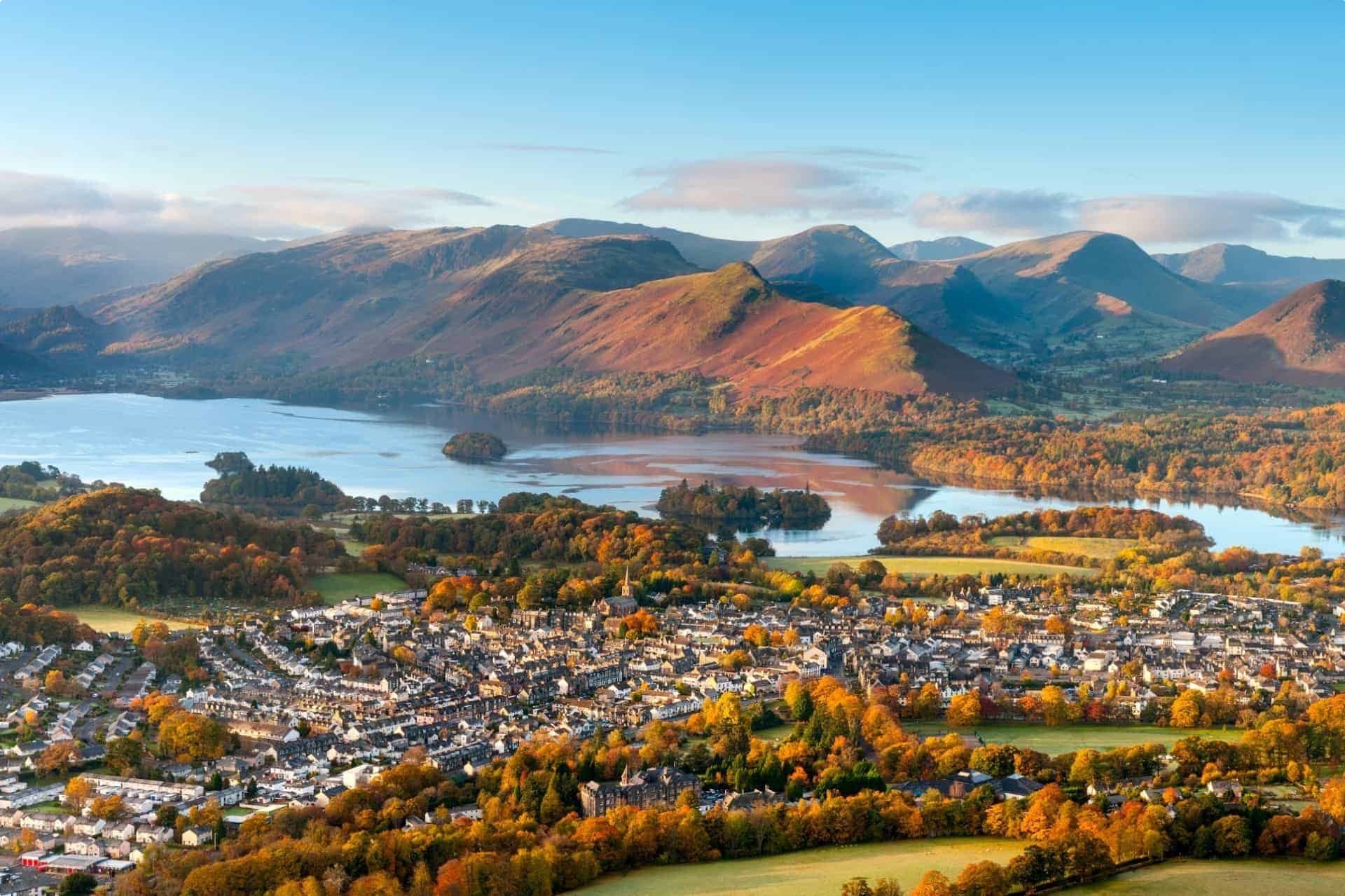
You can learn more about British country houses on one of Odyssey Traveller’s many tours to the British Isles designed for mature and senior travellers. Our 19-day fully escorted Villages of England Tour, in particular, let you explore the history and culture of the British countryside, all the while staying at well-appointed hotels.
This tour explores English heritage, taking you to the stone circles and henge monument at Avebury, the famous Lake District, the white-washed, thatched-roofed cottages of Milton Abbas, the traditional village buildings of Sussex, the rolling hills of Dartmoor, England’s most photographed bridge in Ashford-in-the-Water, and the delightful coastal village of Port Isaac. We stroll through the villages on Cornwall’s coast, and view the castle towering over the cobblestoned main street of Dunster. All of this will offer a panoramic and revealing portrait of England’s villages.
Another tour that may be of interest is our 22-day Rural Britain Walking Tour. Highlights include the Isle of Arran and the diverse landscapes of South Wales, plus some of the great walking tracks of Britain, including Hadrian’s Wall, the Southwest Coast Path, and the South Downs Way. You may also enjoy our 21-day Prehistoric Britain Tour, which visits Skara Brae and other historic sites in Orkney, Shetland, and Wales. Both tours will let you discover hidden gems and amazing landscapes.
Odyssey Traveller has been serving global travellers since 1983 with educational tours of the history, culture, and architecture of our destinations designed for mature and senior travellers. We specialise in offering small group tours partnering with a local tour guide at each destination to provide a relaxed and comfortable pace and atmosphere that sets us apart from larger tour groups. Tours consist of small groups of between 6 and 12 people and are cost inclusive of all entrances, tipping and majority of meals. For more information, click here, and head to this page to make a booking.
Articles about Britain published by Odyssey Traveller:
- The London Underground
- Victorian Women’s Fashion
- Queen Victoria’s Britain, Part 1 and Part 2
- Understanding British Churches
- Georgian Architecture
- London’s Victorian Architecture
External articles to assist you on your visit to Britain:
- National Parks UK
- William the Conqueror (History.com)
- Queen Victoria
- The Royal Parks of London
- The Royal Mausoleum
Related Tours
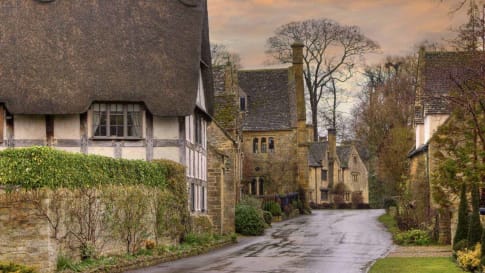
19 days
Jun, SepEngland’s villages small group history tours for mature travellers
Visiting England
Guided tour of the villages of England. The tour leader manages local guides to share their knowledge to give an authentic experience across England. This trip includes the UNESCO World heritage site of Avebury as well as villages in Cornwall, Devon, Dartmoor the border of Wales and the Cotswolds.
From A$16,995 AUD
View Tour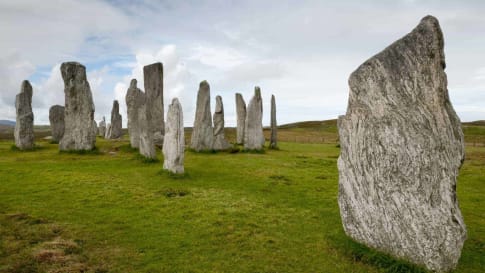
21 days
AugPrehistoric Britain small group history tour including standing stones
Visiting England, Scotland
This guided tour invites you to explore UNESCO World heritage sites at Skara Brae in the Orkneys, Isle of Skye, and Stonehenge in a prehistoric tour. This escorted tour has trips to key sites in Scotland, and the Irish sea in Wales such as Gower Peninsula and National Museum in Cardiff and England. Each day tour is supported by local guides.
From A$16,750 AUD
View Tour
22 days
Sep, JunRural Britain | Walking Small Group Tour
Visiting England, Scotland
A walking tour into England, Scotland and Wales provides small group journeys with breathtaking scenery to destinations such as Snowdonia national park , the UNESCO world heritage site Hadrians wall and the lake district. each day tour provides authentic experiences often off the beaten path from our local guides.
From A$15,880 AUD
View Tour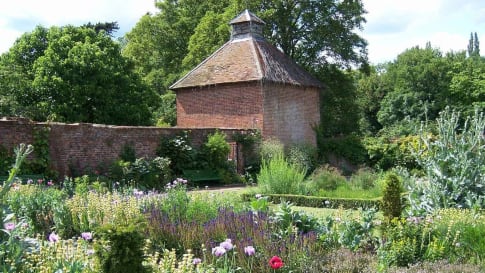
16 days
JunBritish Gardens Small Group Tour including Chatsworth RHS show
Visiting England, Scotland
From A$16,895 AUD
View Tour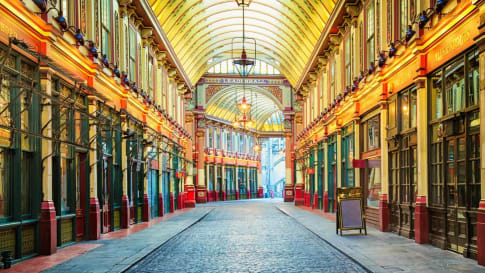
21 days
Sep, JunQueen Victoria's Great Britain: a small group tour
Visiting England, Scotland
A small group tour of England that explores the history of Victorian Britain. This escorted tour spends time knowledgeable local guides with travellers in key destinations in England and Scotland that shaped the British isles in this period including a collection of UNESCO world heritage locations.
From A$15,880 AUD
View Tour
22 days
Apr, AugSeven Ages of Britain, snapshots of Britain through the ages.
Visiting England, Scotland
This guided small group tour starts in Scotland and finishes in England. On Orkney we have a day tour to the UNESCO World heritage site, Skara Brae, before travelling to city of York. Your tour leader continues to share the history from the Neolithic to the Victorian era. The tour concludes in the capital city, London.
From A$15,995 AUD
View Tour
22 days
Apr, SepSmall group tours Medieval England
Visiting England
A small group tour of England focused on Medieval England and Wales. Spend 21 days on this escorted tour with tour director and local guides travelling from Canterbury to Cambridge, passing through Winchester, Salisbury, Bristol, Hereford and Norwich along the way. Castles, villages, Cathedrals and churches all feature in the Medieval landscapes visited.
From A$14,665 AUD
View Tour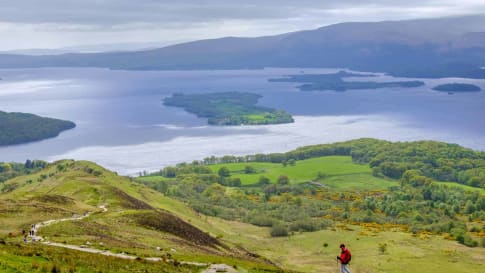
13 days
Jun, Aug, MayScotland's Great Trails Walking Tour
Visiting Scotland
An escorted walking tour of Scotland. This trip is mainly in the Scottish Highlands. Your tour leader guides you to Stirling Castle, Loch Lomond and Craignorms National park with experienced local guides. The tour for mature couples and solo travellers finishes in Edinburgh with time to visit Edinburgh Castle and the Royal mile a UNESCO World heritage site.
From A$11,560 AUD
View Tour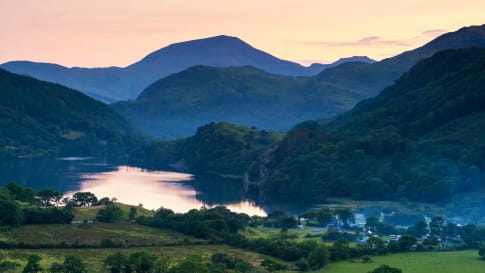
17 days
Mar, SepTour of Wales
Visiting Wales
Join Odyssey Traveller on this tour small group guided tour of Wales, an unforgettable travel experience through varied landscapes from south Wales to north Wales and back, travelling on the coast overlooking the Irish Sea and through picturesque Welsh villages, starting in Cardiff city centre.
From A$14,375 AUD
View Tour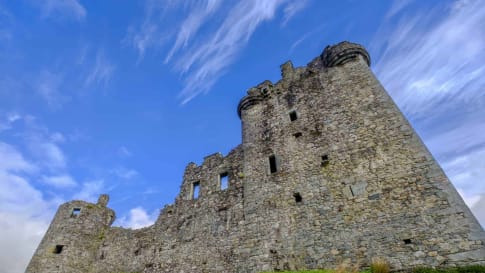
22 days
Jul, Sep, Jun, AugScotland small group tour | Tracing 5,000 years of history
Visiting Scotland
This guided tour of Scotland with a tour leader and local guides includes the isle of Skye, Orkney islands, the Scottish highlands with breathtaking scenery. Edinburgh including the royal mile, Palace of Holyroodhouse, Fort William, Urquhart castle, Stirling castle, loch lomond, Hadrians wall and New Lanark also a UNESCO World heritage site.
From A$15,995 AUD
View Tour10 days
MayGardens of Ireland Small Group Tour
Visiting Ireland, Northern Ireland
Ireland a land of diverse and rich gardens from the dramatic Powerscourt to the impressive kitchen Garden of Kylemore Abbey and the secretive Anne’s Grove. Visit Dublin's historic Botanic Garden to the greenness of Killarney with its rugged Kerry peninsula and charming Muckross House.
From A$9,445 AUD
View Tour
25 days
AugIreland and Lake District walking small group tour
Visiting England, Ireland
A guided small group tour for senior walkers that starts in the capital of Ireland, Dublin. This escorted tour with local guides also explores the Giant's causeway, a UNESCO World heritage site. It transfers from Ireland to Scotland to head to walk in the National park of the Lake district.
From A$14,850 AUD
View TourRelated Articles
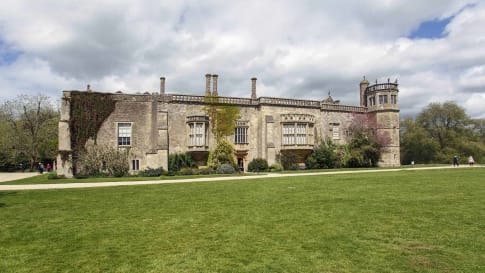
Britain’s National Trust role for successful small group history tours
Britain’s National Trust: Historic houses, gardens and natural wonders Britain is home to many attractions, many of them rich in the region’s history. Sites and artefacts are preserved beautifully, and […]

British Village Icons: Definitive Guide for Travellers
Icons of the British Villages: Pubs and Cottages The British pub and cottage figure prominently in the image of a (often romanticised) quintessential “British village”. In this article, we will give special attention to these…
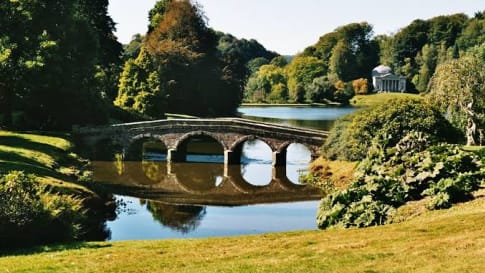
Capability Brown: The English Garden Genius
Article for senior couples and mature solo travellers interested in gardens and design in England and Europe with small group tours of interest.. Brown is regarded as a genius.
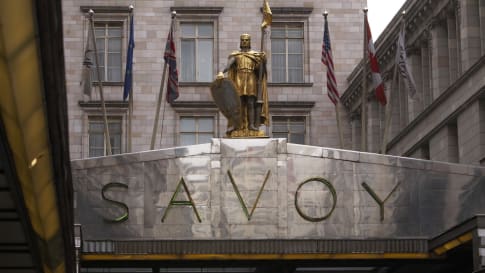
D'Oyly Carte's family
Great Britain has a history of influencers the D'Oyly Carte family is one of them. They shaped London, and the Gilbert and Sullivan history from Devon to Harrogate. Learn more with this article for a small group educational tour for senior couples and mature solo travellers.
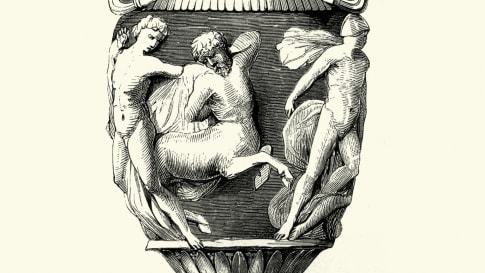
England's Consumer Revolution
Article about the arrival of luxury brands and leisure time in England. Story supports small group tours to Britain and it's history from the Bronze age to the Romans, Vikings, Medieval period through to the industrial revolution and the wealth created. An Antipodean travel company serving World Travellers since 1983 with small group educational tours for senior couples and mature solo travellers.

Exploring Jane Austen’s England
Exploring Jane Austen’s England Jane Austen The reach and magnitude of Jane Austen’s influence on modern readers may make one forget that she only had six novels to her name (three of which were published…
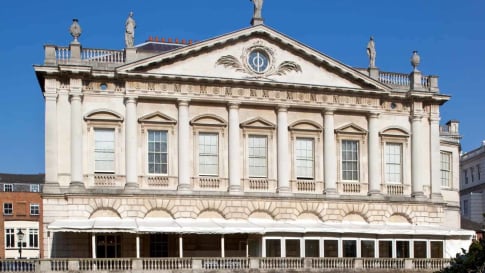
Georgian Style of Architecture: Definitive Guide for Seniors
Article to provide the senior couple or mature solo traveler with an appreciation of the influence of Georgian Architecture in Britain when on a small group educational tour.
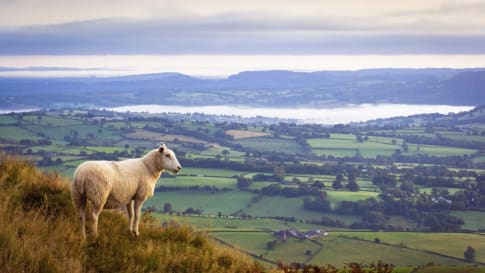
History of English Wool
English wool generated a lot of wealth for the merchants. Traded from Bruges to Venice, a product taxed by Kings and in demand across Europe. Click through to read more.n An Antipodean travel company serving World Travellers since 1983 with small group educational tours for senior couples and mature solo travellers.
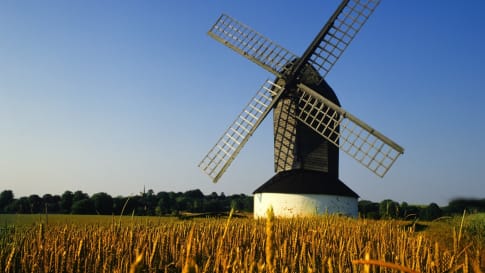
Industrious Revolution
Article for senior couples and mature solo travelers curious about the foundation for the Industrial revolution of Britain and Europe. Leads the reader to Scotland and the Derwent valley mills and to Manchester and Newcastle upon tyne in a period of great expansion.
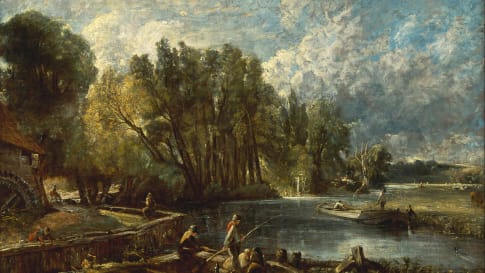
John Constable
John Constable is one of Englands leading landscape painters. Article for those travellers exploring the villages and landscapes of England. An Antipodean travel company serving World Travellers since 1983 with small group educational tours for senior couples and mature solo travellers.

Lumps and Bumps: How to Read the British Landscape
The British landscape has been worked and re-worked. It is secrets of this palimpsest landscape is revealed through drainage patterns and prehistoric features all the way through to the modern day. These small group tours for mature and senior travellers examine the landscape from the Neolithic, to Roman, through the seven ages of Britain in walking tours and history tours of Britain.

Understanding British Churches: The Definitive Guide for Travellers
British Churches Through the Years “How old is this church?” asks Mary-Ann Ochota in a chapter of her book, Hidden Histories: A Spotter’s Guide to the British Landscape (Francis Lincoln, 2016, p. 250). In this article, we…

